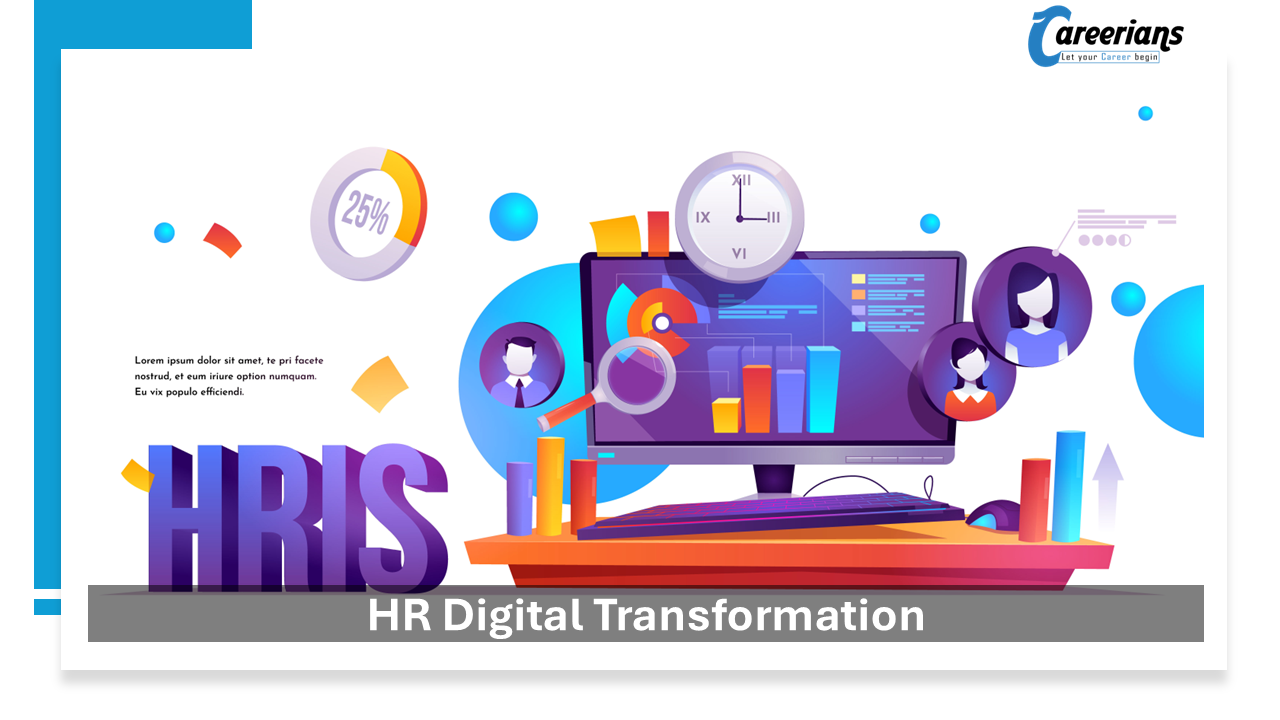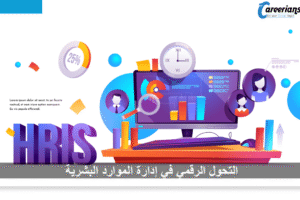
HR Digital Transformation
HR Digital Transformation
For decades, Human Resources was seen as a purely administrative department — files, payroll sheets, attendance records, and endless approvals.
But the world has changed now as “HR Digital Transformation”.
Today, HR is no longer about paperwork — it’s about data, intelligence, and impact.
HR digital transformation is not a luxury anymore.
It’s a strategic necessity for mid-sized companies in Egypt and the Gulf that want to stay competitive, attract talent, and make smarter business decisions.
Digital HR is not just about automating processes — it’s about transforming HR into a true strategic business partner.
What HR Digital Transformation Really Means
Let’s be clear — HR digital transformation isn’t about buying new software.
It’s about building a connected, data-driven HR ecosystem that allows your company to make faster and more accurate people decisions.
Recruitment isn’t just interviews anymore.
Payroll isn’t just calculations.
Performance isn’t just a manager’s opinion.
In a digital HR environment, every one of these activities becomes measurable, transparent, and smart.
Traditional HR collects data.
Digital HR analyzes it, understands it, and acts on it.
Why Mid-Sized Companies Should Start Now
-
Faster Decisions
In dynamic markets like Egypt and the Gulf, slow decision-making kills efficiency.
With real-time dashboards showing attendance, recruitment progress, and performance trends, HR can give top management instant insights. -
Cost Control
Digital systems reduce manual errors, automate repetitive tasks, and save both time and administrative costs. -
Better Employee Experience
Employees today expect everything to be instant.
They want to request leave from their phones, view performance ratings online, and access salary slips with one click.
Digital HR builds transparency and trust. -
Talent Attraction
Top talent won’t join outdated organizations.
A digital workplace signals modern culture and innovation — the kind of environment skilled employees want to be part of.
The Four Pillars of HR Digital Transformation
A successful HR transformation roadmap usually includes four main components:
1. The Core System (HRIS)
Your HR Information System (HRIS) is the backbone of your digital transformation.
It centralizes all employee data — from hiring and attendance to payroll, training, and performance.
In Egypt and the Gulf, companies typically choose between:
-
Local solutions (like Smarter HR, Benaa HR, and similar cloud systems)
-
Global platforms (like SAP SuccessFactors, Zoho People, BambooHR)
The right choice depends on your company’s size, complexity, and scalability needs.
2. People Analytics & Artificial Intelligence
The next level of transformation is analysis, not just automation.
AI tools can identify trends, predict turnover, and even flag engagement issues before they become real problems.
Instead of just knowing who left the company, HR can start asking why they left — and use data to prevent it from happening again.
3. Digital Workflows
Every daily HR process — leave requests, approvals, training plans, or bonuses — can now be automated through digital workflows.
That means fewer bottlenecks, faster actions, and complete traceability.
4. Digital Culture
Transformation fails when people don’t believe in it.
That’s why HR must lead the change — train teams, promote system usage, and reward digital adoption.
Technology can only transform HR if the mindset inside the company transforms first.
The Stages of HR Digital Transformation
Every company’s journey is unique, but most follow four clear stages:
Stage 1: Foundation
Start by organizing and centralizing all HR data.
Collect employee files, payroll data, and contracts into one source of truth.
Clean, structured data is the foundation of everything digital.
Stage 2: Automation
Automate repetitive tasks — payroll, attendance, leave requests, approvals.
This saves time, reduces human error, and lets HR focus on strategic work instead of administration.
Stage 3: Analytics
Move from recording to understanding.
Use tools like Power BI or Google Data Studio to track turnover rates, performance trends, and absenteeism.
Data visualization helps managers make informed decisions quickly.
Stage 4: Integration
Connect HR with other departments:
-
Finance (for payroll cost centers and reports)
-
Sales (for commissions and performance incentives)
-
Procurement (for approval workflows)
When your systems talk to each other, your company becomes a single, intelligent ecosystem.
Common Challenges in HR Digital Transformation
-
Resistance to Change
Employees often see new systems as threats.
The key is early communication, hands-on training, and showing how the system benefits them, not just management. -
Weak IT Infrastructure
Some mid-sized companies still lack servers or stable internet.
Cloud-based HR platforms are the perfect solution to start small without heavy investment. -
Limited Digital Skills
HR professionals may be great at people management but not comfortable with analytics or automation tools.
Upskilling the HR team is crucial to make the most of new systems. -
Confusing “Digitization” with “Transformation”
Uploading files to the cloud is not transformation.
Real transformation happens when processes and decisions change because of data-driven insights.
A Step-by-Step Plan to Start Your HR Digital Journey
If you’re managing a mid-sized company, here’s how you can start effectively:
1️⃣ Assess Your Current HR Operations
Ask:
-
Which processes take the most time?
-
Where do most errors occur?
-
What HR data is hard to access or unreliable?
2️⃣ Choose a Scalable System
You don’t need SAP on day one.
Start with a flexible cloud solution that grows with your company.
3️⃣ Train Your HR Team
No system works without people who believe in it.
Invest in practical workshops before going live.
4️⃣ Measure Success from Month One
Define KPIs like:
-
Payroll accuracy improvement
-
Time saved in approvals
-
Employee satisfaction levels
5️⃣ Expand Gradually
Start with one module — maybe payroll or attendance — and then expand to recruitment or performance management.
Sustainable transformation always grows in phases.
The Real Benefits After Transformation
✅ Higher Efficiency: Faster workflows and fewer errors.
✅ Greater Transparency: Decisions are traceable and data-backed.
✅ Improved Communication: Everyone shares the same real-time information.
✅ Employee Motivation: Clear goals, visible progress, and fair evaluations.
✅ Smarter Decisions: Insights replace intuition.
Real Success Stories
In Egypt, a mid-sized construction company introduced a cloud HR system for attendance and payroll.
Within six months, payroll processing time dropped from seven days to two.
In Saudi Arabia, a logistics firm used a basic People Analytics dashboard.
They discovered turnover spikes in specific branches due to weak local leadership.
With quick leadership training, turnover dropped by 35% in three months.
Digital HR is not about spending more — it’s about thinking smarter.
The Future of HR: AI and Predictive Analytics
The next phase of HR digitalization is already unfolding.
AI tools can analyze employee sentiment from surveys, predict resignations before they happen, and even match internal candidates for future roles.
HR’s role won’t disappear — it will evolve.
Tomorrow’s HR leader won’t just manage people —
they’ll manage data, intelligence, and culture.
HR Digital Transformation Conclusion
HR digital transformation isn’t a one-time project.
It’s a continuous journey toward smarter, faster, and fairer people management.
For business leaders in Egypt and the Gulf, the opportunity is now:
start small, build gradually, and empower your HR to think and act digitally.
Because in the modern business world,
your company’s most valuable asset isn’t just its people —
it’s how intelligently you manage them.




